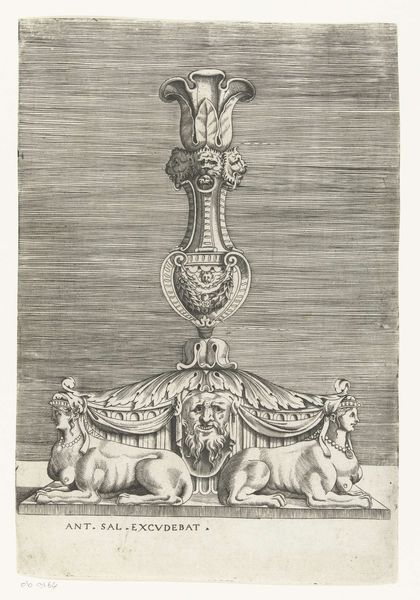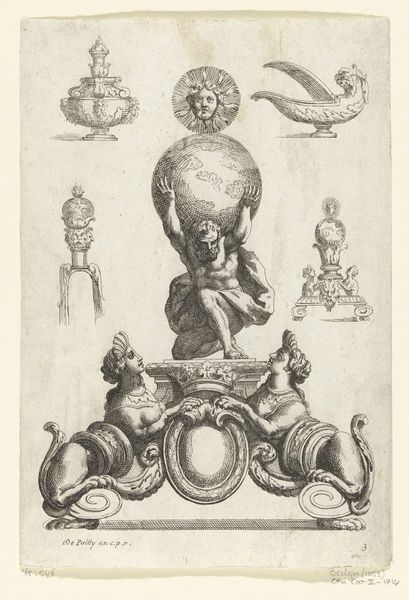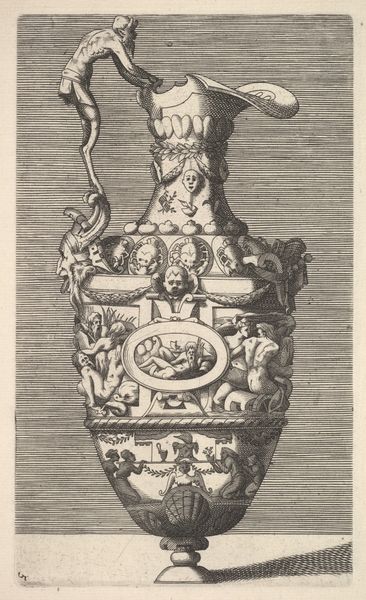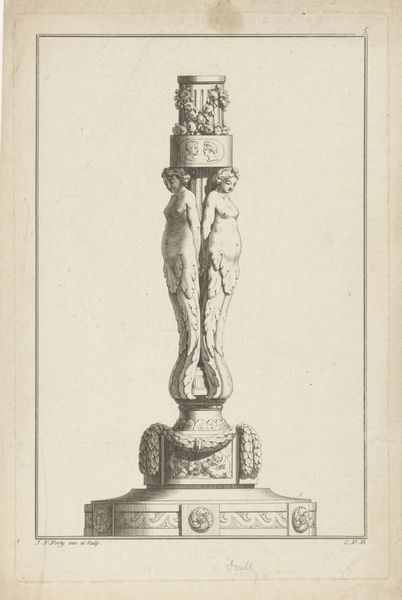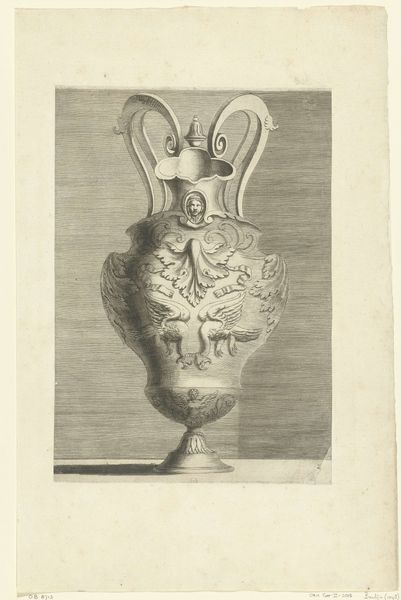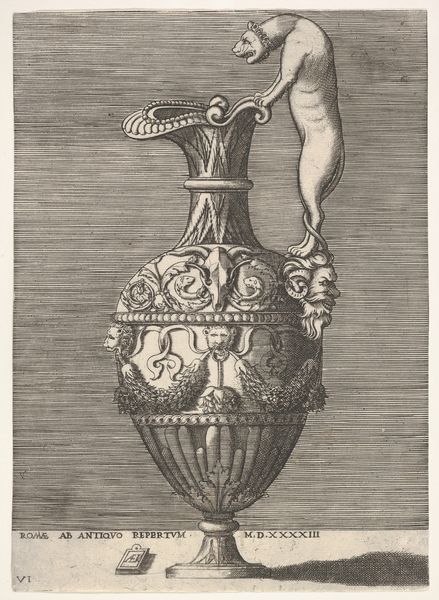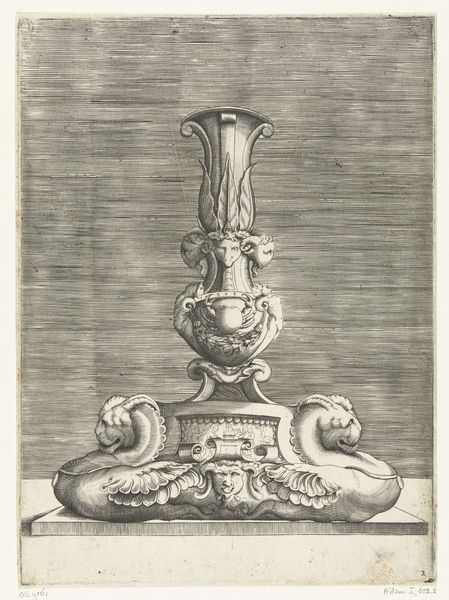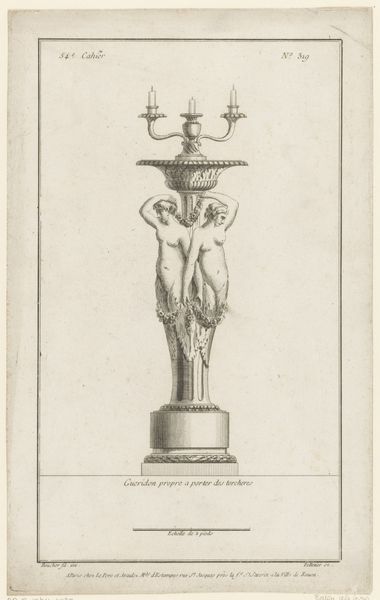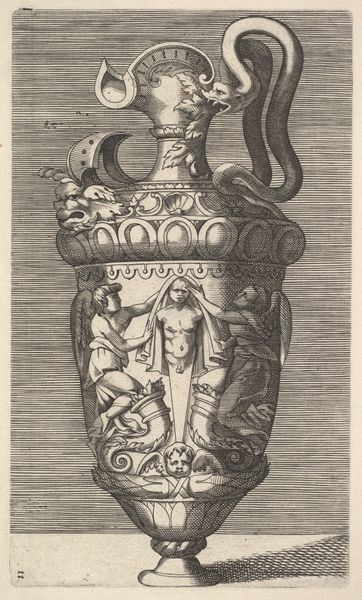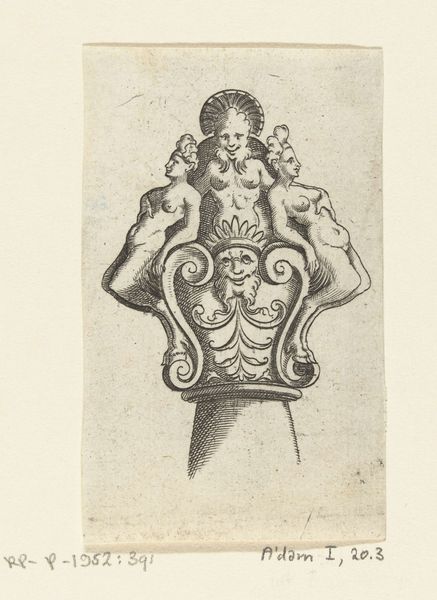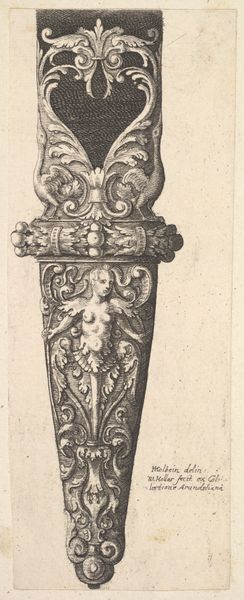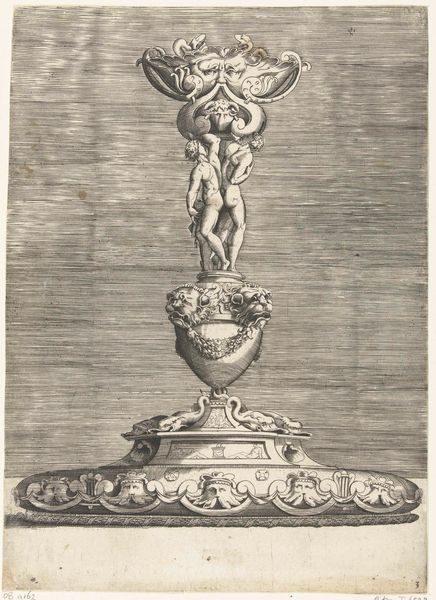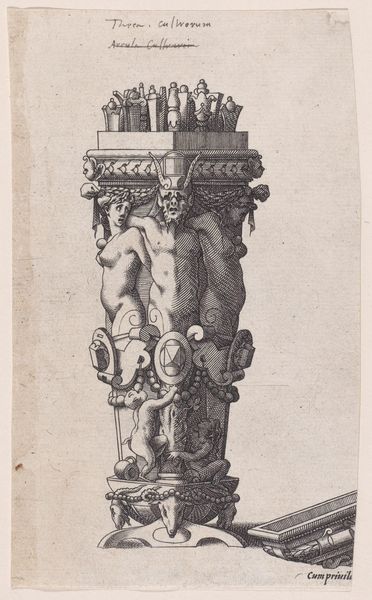
print, metal, engraving
# print
#
metal
#
figuration
#
11_renaissance
#
northern-renaissance
#
engraving
Dimensions: height 252 mm, width 179 mm
Copyright: Rijks Museum: Open Domain
Curator: This engraving, "Vaasvormige kandelaar," which translates to vase-shaped candlestick, dates back to 1552. We don't know the artist. Currently, it is part of the Rijksmuseum's collection. The print appears to be metal. What are your initial thoughts? Editor: It's quite imposing! I'm immediately struck by the duality of life and death imagery. The playful cherubs contrast with the skulls and grimacing faces embedded within the candlestick’s design. There's a powerful visual tension at play here. Curator: The material realization of that tension is fascinating. Look at the crispness of the engraving, the sheer skill required to translate these ornate details into metal. Was this meant as a design blueprint? Was such detail attainable? Editor: That tension becomes incredibly poignant when you consider how frequently light and dark interplay with mortality symbolism in Renaissance art. Consider, for example, that candlesticks represent enlightenment and the fleeting nature of life. Light pushes back against the ever-present darkness of our eventual demise. Curator: True. The labor to manifest something beautiful, functional, from base metals also points to alchemy. I'm most curious about its social function: was this a courtly design, destined for the table of someone powerful, or an aspirational image circulated amongst craftspeople? Editor: The faces integrated into the form suggest a certain psychological presence, like ancestral spirits guarding the light. It really taps into the period’s evolving understanding of humanism mixing it with the pre-existing medieval preoccupation with the "memento mori". Curator: Precisely! And in that light, considering artisanal consumption practices in the sixteenth century in this geographic region could really help uncover its significance and illuminate craft hierarchies and access. Editor: Reflecting on the print, it makes one consider how ubiquitous symbolism permeates art across eras. The message shifts, morphs, changes emphasis; the core concepts continue to engage. Curator: Indeed. Examining the material production reminds me that access to those messages wasn't evenly distributed. That this intricate piece of metal, captured on print, required expertise and tools speaks volumes.
Comments
No comments
Be the first to comment and join the conversation on the ultimate creative platform.
